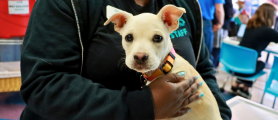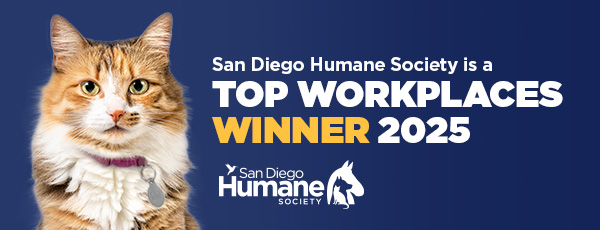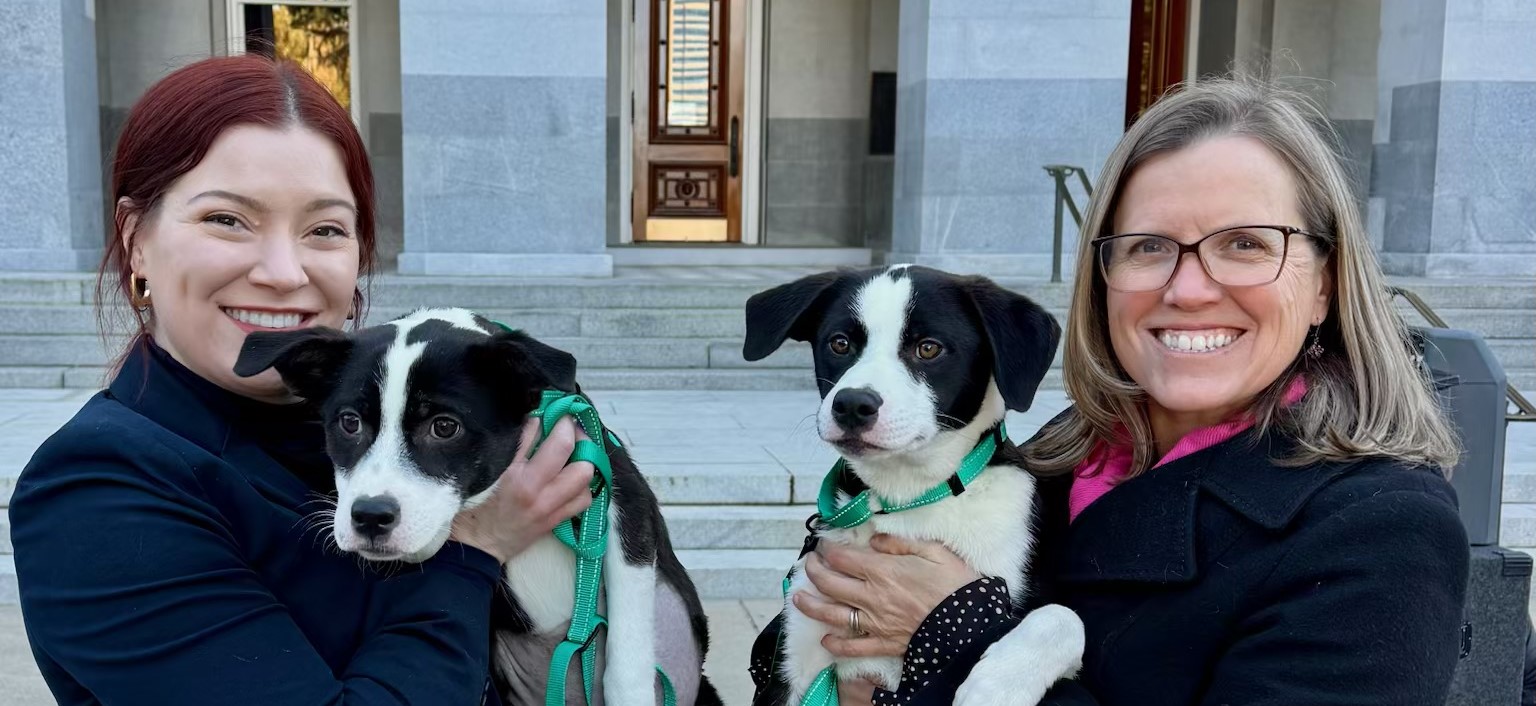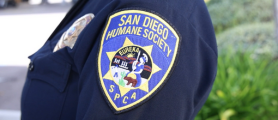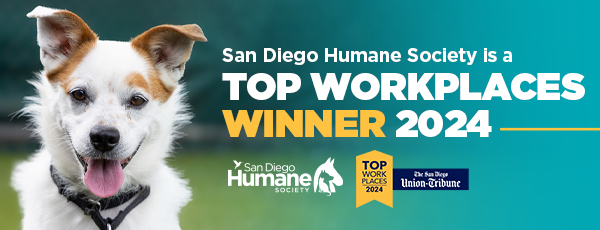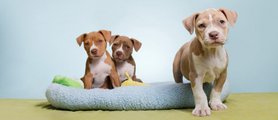Etiquette 101: Dog Park Diego
6 tips to ensure your outing truly is a walk in the park
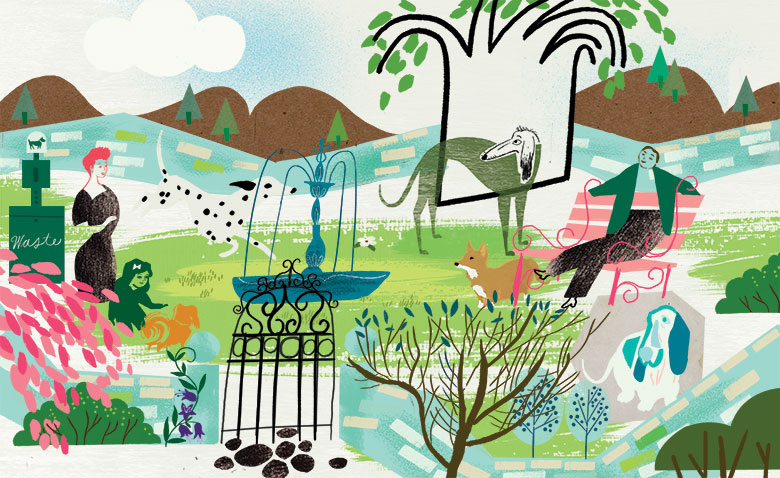
Some great ways to prepare yourself prior to visiting a dog park and/or dog beach are to learn about dog park dos and don’ts, what to look for in regard to healthy play versus unhealthy play, proper dog park etiquette, and ensuring that you have a solid recall on your dog.
1. KEEP MOVING
Dogs don’t like large groups of other dogs coming at them. Avoid lingering near the entrance when new dogs are entering.
2. CLOSE THE GATE
Most parks have two gates with an entry way in between them. Remove your dog’s leash between the first and second gate. Your dog can feel confined if he’s still on leash when the other dogs aren’t. If other dogs are exiting, let them out before you enter the first gate, and make sure one gate is closed at all times.
3. PLAY NICE
If your dog loves to chase, he may find nothing more exciting than racing a dog on the other side of the fence. But if racing and chasing turns into excessive barking or growling, it’s time to redirect his attention. Use vocal recall or a ball— something that creates a positive distraction. Avoid squeaky toys—they run the risk of riling up every dog in the park!
4. SCOOP THE POOP
All cities have a municipal ordinance about picking up after your dog. It’s required and it’s polite so everyone can enjoy the park. Don’t expect the park to have bags available; take one or two with you just in case.
5. KEEP PUP HYDRATED
Remember, dogs don’t sweat and they’ll keep playing long after they’re physically exhausted or overheated. Bring your own water if you’re unsure there’s a working fountain. If another dog is lingering at the water bowl, check with his owner before offering a drink.
6. SIT IT OUT
Not all dogs are social butterflies. If your dog spends his time cowering under the bench or glued to your side, try to encourage him to come out, but remember, a trip to the park is supposed to be a positive experience. If there are too many dogs and he feels intimidated or anxious, go back another time when the park is less crowded.
The Dos & Don’ts of Dog Park Etiquette
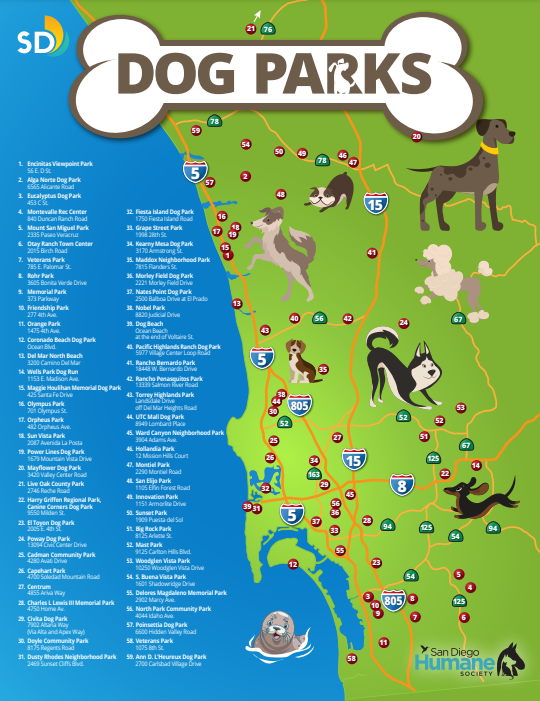 |
| Click to See Dog Parks in San Diego County |
Do
- … close the gates. Most parks have two gates, creating a small entry area before the park proper. Remove your dog’s leash between the first and second gate.
- … play nice. If your dog starts growling or barking excessively, use vocal recall, a toy or some other form of positive distraction to redirect his attention.
- … clean up after your pet. Don’t expect the park to have bags available; bring a couple with you just in case.
- … bring water. Dogs tend to keep playing long past the point of physical exhaustion or overheating.
- … bring identification and make sure your dog is up-to-date on vaccinations. There has been a spike in the number of canine parvovirus cases recently; keeping your dog’s vaccinations current can reduce his risk of infection.
- … pay attention. You’re responsible for your dog’s safety and behavior—don’t ignore him in favor of a phone call or a chat with another owner.
- … think twice about bringing your kids. Some dogs don’t do well around children, and vice versa.
- … bring your dog to the park regularly. The more exposure he has to other people and pets, the more comfortable he will be.
Don’t
- … let your dog off leash in an area not designated as such. Loose dogs in public areas can cause problems for park-goers and leave owners facing a hefty fine.
- … hang out near the entrance when new dogs are coming in. Dogs don’t like groups of other dogs coming at them, and can feel confined, anxious and uncomfortable if they’re still on leash when other dogs aren’t.
- … bring squeaky toys, even if they’re your pup’s favorite. Squeaky toys can rile up every dog in the park.
- … take treats or food of any kind into the park. Food can make some dogs aggressive toward one another.
- … take puppies younger than 6 months, especially if they haven’t had all their shots.
- … grab your dog’s collar if he gets into a scuffle. If you need to break up a fight, grab your dog’s back legs and lift up like a wheelbarrow to get him out of the situation.
- … force your dog to be social. Not all dogs are social butterflies. Watch for signs that he may be feeling uncomfortable. If he stays glued to your side or hides under a bench, try to coax him out, but remember: A trip to the park is supposed to be a positive experience. If he feels intimidated or anxious, come back another time.
Whom do I contact for help?
Visit this page to learn more about who to call and how to report an Animal Emergency in San Diego.
Recap...
DO make sure your dog is current on vaccinations.
DO keep identification on your dog.
DON’T take treats or food of any kind into the park.
DON’T take puppies younger than 6-months, especially if they haven’t had all their vaccinations.
DO pay attention to your dog.
DON’T spend the entire visit on the phone or chatting with other people. You’re responsible for your dog’s safety and behavior —don’t ignore him.
DO think twice about taking your children to the park with you. Some dogs do not do well around children and vice versa.
DON’T grab your dog’s collar if he gets into an altercation with another dog. The neck is the first place a dog will go to bite and if your hand is in the way, it’s fair game. If you need to break up a fight, grab your dog’s hind legs to get him out of the situation.
Source: Michael Farnham, San Diego Humane Society Quality Assurance ManagerPublished: December 31, 2019


